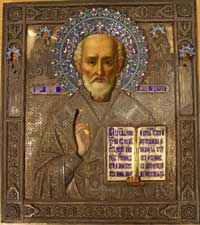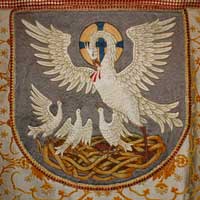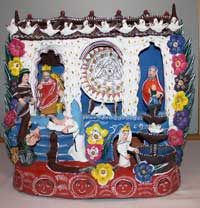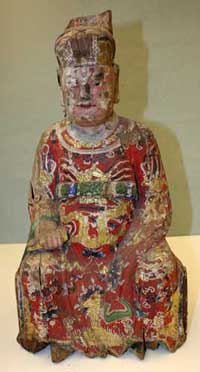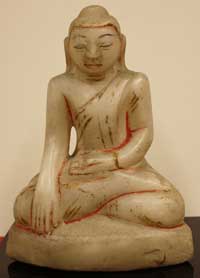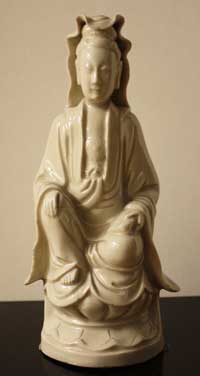Sacred and Other Objects
Painted images and images in the form of objects are used to convey the presence of God or to enable a connection with higher powers.
These may take the form of stylized paintings, icons for example; symbolic images on liturgical clothing, like the pelican on the humerel veil; three dimmensional scenes from sacred writings, as with the ceramic sculpture of the slaying of the innocents; and stylized statues, such as the Jade Emperor, Buddha and the Goddess of Mercy.
Icons and other religious portraits are usually created with the person looking straight ahead. The eyes seem to follow you around the room. Vision psychologists Jan Koenderink, Andreas van Doorn, Astrid Kappers, and James Todd (Perception, 2004) discovered that a special artistic gift is not required; just that the person portrayed looks straight ahead. The nature of the visual system takes over and creates this interpretation.
